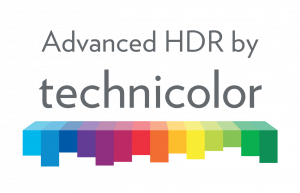Live Sports Broadcasts in HDR Lay Foundation for Broadcasters to Offer Consumers Premium Viewing Experiences
Story Highlights
There has been considerable effort over the past few years to incorporate high dynamic range (HDR) across all categories of viewing experiences, including theatrical and episodic programming. But as efforts to make the transition from SDR to HDR picks up steam, broadcasters are coming to the conclusion that live sports programming in HDR creates an opportunity to offer a compelling and differentiated experience for consumers seeking high-quality over-the-air broadcast. As a result, 2022 is shaping up to be a pivotal year for sports content broadcast in HDR.
After years of technological advancements and standards development, broadcasts of major sporting events are quickly moving from their experimentation and “field trial” stages to commercial HDR production. Over the past twelve months, for instance, the Super Bowl and the Olympics were made available in HDR.
These are terrific milestones, but there is more work to be done. The industry continues to wrestle with the fact that it must continue supporting the large installed base of SDR-based infrastructure and consumer devices as it transitions to HDR. This requires coordination through the content creation, distribution and consumption ecosystem.

The good news is that solutions are emerging to handle the mix of HDR and SDR content that must be managed simultaneously to meet the mass market today and the emerging market of tomorrow.
Transitioning to All HDR Environment
The transition to an all-HDR environment will take time because the entire content production, distribution and consumption ecosystem today is geared to support SDR. This does not mean, however, that consumers — and the broadcast community — have to wait long to enjoy the viewing and business benefits offered by HDR.

Tony Bozzini
HDR and live sports are a match made in heaven for broadcasters that continue to compete with streaming service providers for the hearts and minds of viewers. Live sports are already an area where broadcasters hold a significant qualitative advantage over streaming providers. Live HDR sports broadcasting builds on this competitive edge.
Live sports broadcast in HDR also feeds into demand for the kind of viewing experience consumers expected when they purchased their latest devices. Having paid top dollar for premium 4K UHD OLED and LCD TVs with HDR features, they now expect to have content available that can take advantage of these image-enhancing capabilities. Live sports is a ready source for content to meet this demand.
Fans who want to see their teams play over the course of a morning or afternoon, do not want to miss important on-field developments as changing lighting conditions create shaded areas — or overly bright spots — that interfere with the ability to clearly see the action.
It is because of this that we are seeing industry leaders like Sinclair Broadcast Group make aggressive moves to adopt HDR. SBG has approximately 186 stations throughout the country. They have already converted 28 of those stations to support HDR using the new Advanced Television Systems Committee (ATSC) 3.0 standards.
Backward Compatibility to SDR
To meet current and emerging demands for SDR and HDR content, SBG is standardizing on Advanced HDR by Technicolor, a single stream solution that enables broadcasters to send an SDR signal with metadata that enables an upconversion to HDR when it is received by an HDR-capable device. Adaptive techniques embedded in Advanced HDR by Technicolor enable each video image to be optimized in real-time. This temporally dynamic capability mitigates issues that can arise when producing live sports that feature changing light conditions. Advanced HDR by Technicolor can automatically cope with large shifts in lighting over the course of live outdoor sports broadcasts.
The adaptive features overcome limitations imposed by static converters that restrict the creative options available to video engineers. This enables engineers to produce both SDR and HDR content with high levels of quality through a single-production workflow. This means that broadcasters can simultaneously generate outputs in both formats. Embedded machine learning technology enables the ability to achieve high-quality results through an efficient, real-time, automated process.

Alan Stein
There are two major components to Advanced HDR by Technicolor:
- The Intelligent Tone Management (ITM) tool provides a dynamic, tunable, real-time solution to up-convert SDR content to HDR with full freedom and flexibility to manage contrast, brightness and color saturation.
- The Single Layer HDR (SL-HDR) — which is the technical term for Advanced HDR by Technicolor — is a dynamic and tunable real-time tool that implements the ETSI SL-HDR standard to generate and deliver a single, consistent, high-quality broadcast stream. The backward compatibility feature of SL-HDR1 also means that consumers who do not have HDR devices can enjoy the highest quality SDR experience.
To understand how these solutions address real-world problems in the market, imagine two scenarios.
- In the first, broadcasters and producers may elect to pursue a native HDR strategy. While this will call for the replacement of all cameras and master control equipment, it will also require the company to put into the field mobile vans that are equipped to broadcast HDR.
This is expensive and cost-prohibitive for all but the highest budget productions today. This may be feasible for some major networks on major global events — such as the Olympics. However, it is not practical or affordable across the spectrum of live sporting events.
- In the second scenario, a hybrid approach is employed, in which production is executed primarily in SDR and then converted to HDR. This requires only SDR production trucks and the ITM tool from Advanced HDR by Technicolor, which is capable of a dynamic up-conversion process based on machine learning.
Of these two scenarios, the hybrid approach appears most feasible for broadcasters and live sports networks making the transition to HDR. It is the fastest, most technically efficient and cost-effective strategy for delivering HDR sports content today while providing the installed base of legacy TV sets with the highest quality SDR signal.
